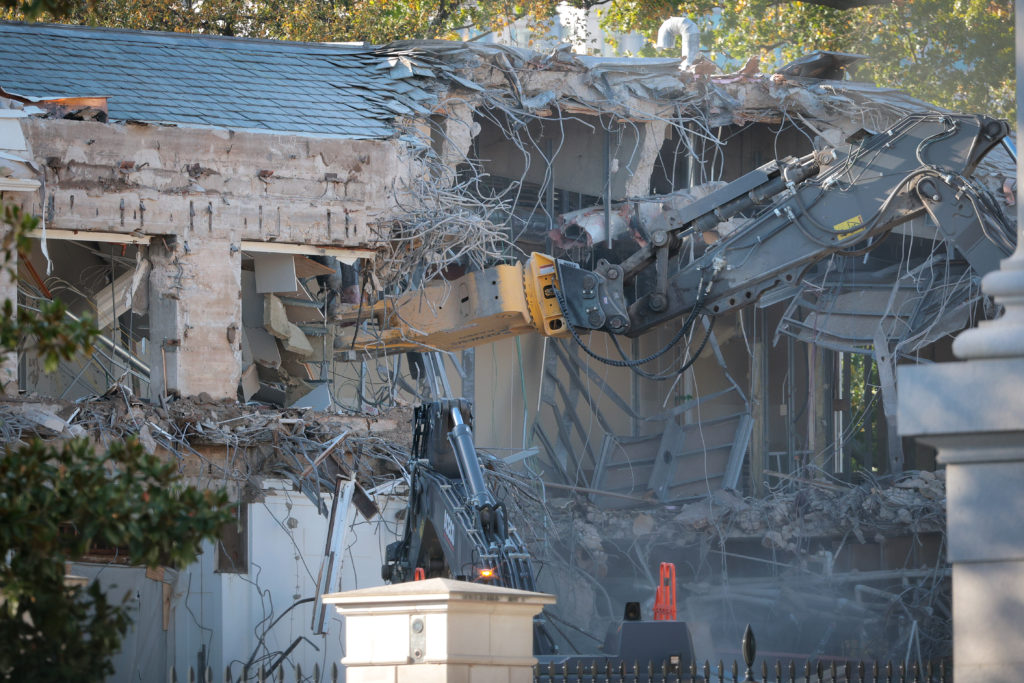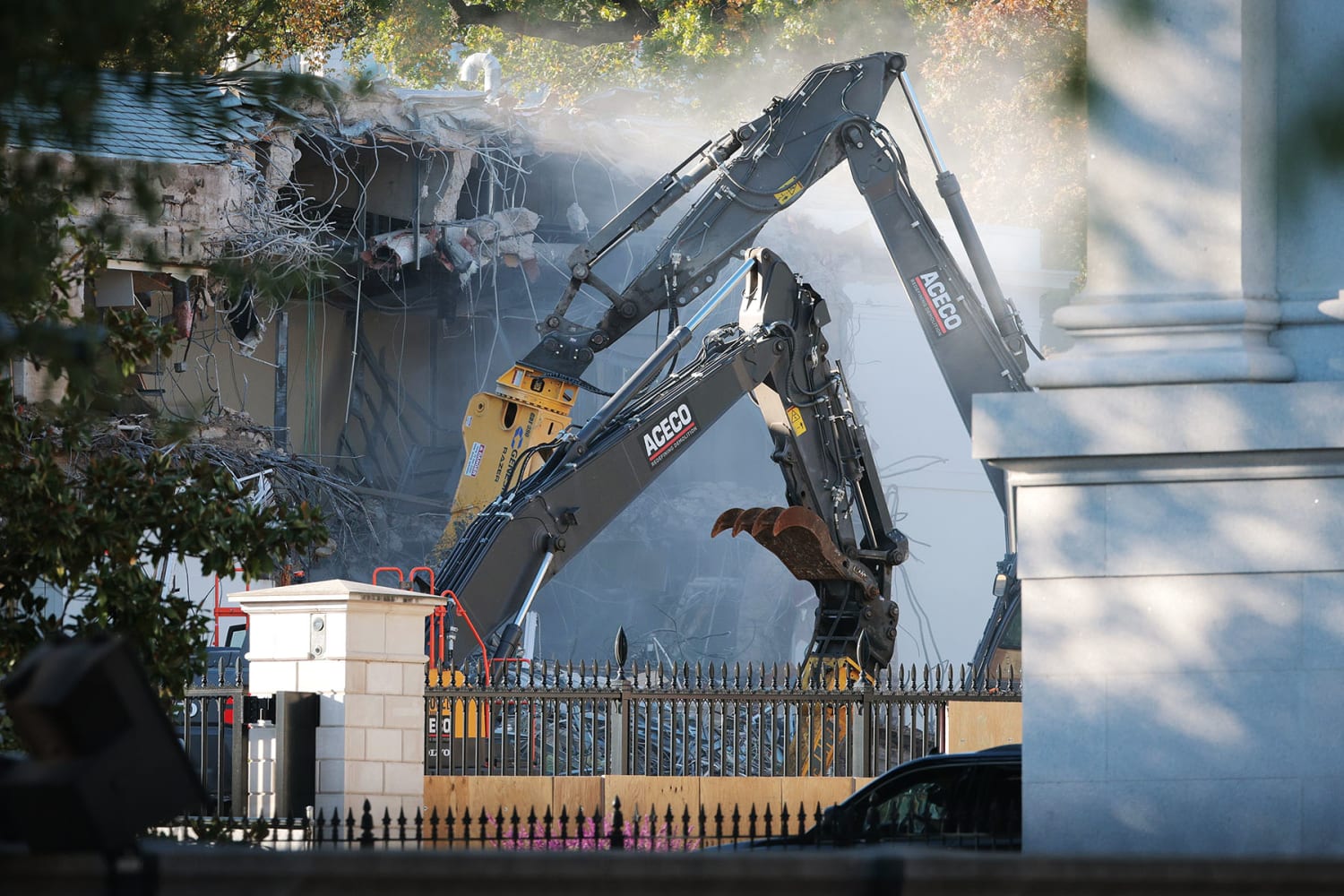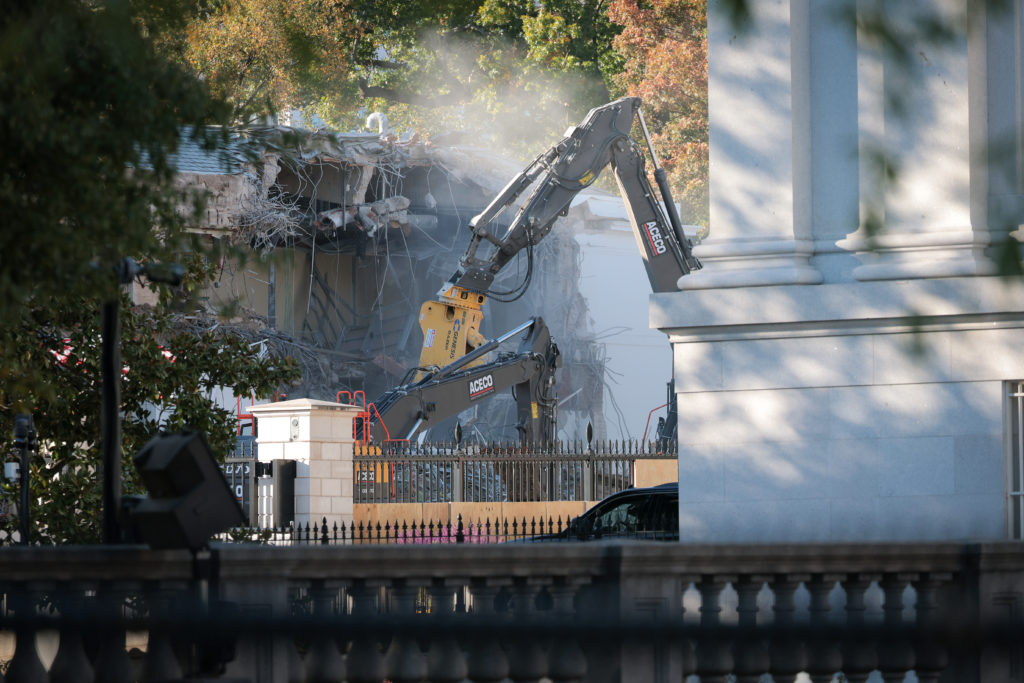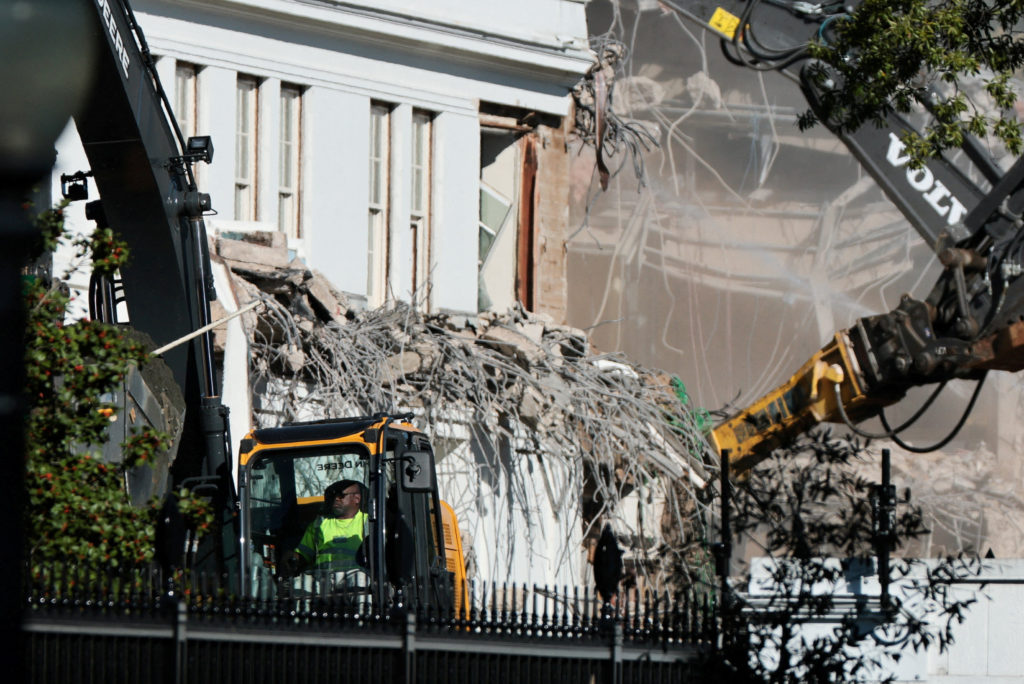White House East Wing Demolition Begins for Trump's Grand Ballroom Project
White House East Wing Demolition Begins for Trump's Grand Ballroom Project
Quick Summary: On Monday, October 20, 2025, demolition crews began tearing down portions of the White House's historic East Wing to make way for President Donald Trump's ambitious $250 million ballroom project—a massive 90,000-square-foot event space that will become the largest structural addition to the Executive Mansion since 1948.

Historic Demolition Underway at the White House
In an unprecedented move that has captured national attention, demolition work began Monday morning on the White House East Wing, marking the start of what will be the most significant structural change to America's presidential residence in over 75 years. Large construction equipment was observed tearing into the East Wing's facade, with dramatic images showing windows shattered, walls torn apart, and building materials scattered across the grounds.
President Trump announced the groundbreaking via social media, declaring, "I am pleased to announce that ground has been broken on the White House grounds to build the new, big, beautiful White House Ballroom." He emphasized that the project is "completely separate from the White House itself" and promised the East Wing would be "more beautiful than ever when it is complete."
The $250 Million Grand Ballroom Vision
The centerpiece of this ambitious construction project is a sprawling 90,000-square-foot ballroom designed to accommodate up to 999 guests—a dramatic increase from the current East Room's 200-person capacity. According to renderings released by the White House, the ballroom will feature opulent gold and crystal chandeliers, gilded Corinthian columns, a coffered ceiling with gold inlays, and three walls of arched windows overlooking the South Lawn with views of the Washington Monument.

Trump has repeatedly stated that the ballroom fulfills a 150-year desire among presidents for a grand entertaining space suitable for hosting foreign dignitaries, heads of state, and large official events. "It will be the finest ballroom in the country," Trump proclaimed at a recent donor dinner, where he revealed the project's capacity had been increased from the originally planned 650 seated guests.
Controversy and Concerns Surrounding the Demolition
The demolition has sparked significant controversy on multiple fronts. Perhaps most notably, construction began despite the project lacking formal approval from the National Capital Planning Commission (NCPC), the federal agency responsible for reviewing and approving major construction work on government buildings in the Washington area.
Will Scharf, chairman of the NCPC and White House staff secretary, stated at a September commission meeting that the agency does not have jurisdiction over "demolition or site preparation work" for federal property—only "vertical build" construction. However, questions remain about whether proper approvals were obtained, especially given the ongoing federal government shutdown that has closed commission offices.

Historical Preservation Concerns
Presidential historians and preservation experts have expressed alarm at the demolition of the East Wing, which was originally built in 1902 and expanded in 1942 during Franklin D. Roosevelt's administration. One historian described the demolition as "almost like slashing a Rembrandt," highlighting concerns about irreversible damage to America's architectural heritage.
The East Wing has historically housed the first lady's offices, a theater, and the visitor's entrance that welcomes foreign dignitaries. Press Secretary Karoline Leavitt announced these offices would be "temporarily relocated" during construction and the wing would be "modernized and renovated," adding that "nothing will be torn down"—a statement that has been called into question by Monday's visible demolition work.
Funding and Private Donations
Trump has consistently emphasized that the ballroom project will be funded entirely through private donations, with "zero cost to the American Taxpayer." He claims to be personally contributing alongside "many generous Patriots" and "Great American Companies." During the recent government shutdown, a White House Office of Management and Budget memo confirmed that construction would continue uninterrupted because it was being funded by private donors.

Major corporations have begun pledging support for the project. Carrier Global Corp., a leading HVAC manufacturer, announced it would donate the air conditioning system for the massive ballroom. "Carrier is honored to provide the new iconic ballroom at the White House with a world-class, energy-efficient HVAC system," the company stated.
However, the White House has not yet disclosed a complete list of donors, despite promises to do so. This lack of transparency has raised questions about potential conflicts of interest and the influence wealthy contributors might gain through their donations.
Project Timeline and Specifications
Site preparation work, including the clearing of trees on the South Grounds, began in September 2025. The administration has set an ambitious completion deadline of January 2029—before Trump's current term ends. The ballroom will be the largest structural addition to the White House since the Truman Balcony was added in 1948, actually dwarfing the residence itself in size.
White House Communications Director Steven Cheung defended the project by posting historical photos of White House construction during the 1950s Truman administration, when the entire structure underwent reconstruction after engineers discovered it was "structurally weak and in danger of collapse." Cheung wrote, "Construction has always been a part of the evolution of the White House. Losers who are quick to criticize need to stop their pearl clutching and understand the building needs to be modernized."
Trump's Broader Vision for White House Transformation
The ballroom project represents just one element of Trump's comprehensive effort to reshape the White House complex and surrounding areas to his personal aesthetic vision. As a former real estate developer, Trump has implemented numerous changes including:
- Installing large flagpoles on the grounds
- Redesigning the Rose Garden in a style reminiscent of his golf clubs
- Redecorating the Oval Office with gold ornamentation
- Proposing an Arc de Triomphe-style monument to celebrate America's 250th anniversary in 2026
At the donor dinner, Trump explained his design philosophy: "A new thing is you build a super modern building next to an old-fashioned building, and I think that's good, but I don't have the courage to do that with the White House." He promised the ballroom would maintain the "theme and architectural heritage" of the neoclassical mansion and be "appropriate in color and in window shape."

Media Restrictions and Treasury Department Directive
In an unusual development, the Treasury Department—which is adjacent to the East Wing—issued a directive instructing employees not to share photos of the demolition work. This restriction has been interpreted by some as an attempt to control the narrative surrounding the controversial construction project, though officials have not provided a public explanation for the directive.
Reporters and observers have watched the demolition from nearby public areas, including a park near the Treasury Department, capturing dramatic images of construction equipment tearing into the building's facade.
Public Reaction and Political Implications
The demolition has generated intense public reaction across the political spectrum. Supporters view the ballroom as a long-overdue upgrade that will enhance America's ability to host dignitaries with appropriate grandeur, while critics see it as an unnecessary vanity project that destroys historic architecture and potentially creates conflicts of interest through private donations.
Trump himself appears unfazed by criticism. When hosting Louisiana State University baseball champions in the East Room on Monday, he referenced the construction happening "right behind us" and noted the noise from ongoing work. "We have a lot of construction going on, which you might hear periodically," he said. "It just started today."
Frequently Asked Questions About the White House Demolition
Why is the White House East Wing being demolished?
The East Wing is being demolished to make room for President Trump's new 90,000-square-foot grand ballroom, designed to accommodate up to 999 guests for state dinners and official events. The current East Room can only hold about 200 people.
Who is paying for the White House ballroom construction?
President Trump claims the $250 million project is being funded entirely through private donations from himself, wealthy individuals, and major corporations. No taxpayer money is reportedly being used. However, the complete list of donors has not been publicly disclosed.
Did Trump get approval for the demolition?
The project began without formal approval from the National Capital Planning Commission, which typically oversees major construction on government buildings. Officials claim the agency doesn't have jurisdiction over demolition or site preparation work.
When will the White House ballroom be completed?
The administration has set a completion deadline of January 2029, before President Trump's current term ends. The project is expected to take over three years from groundbreaking to completion.
What happens to the First Lady's offices during construction?
The East Wing, which traditionally houses the First Lady's offices, theater, and visitor entrance, will have these offices temporarily relocated during construction. Officials promise the wing will be modernized and renovated as part of the project.
Stay Informed About White House Developments
Found this article informative? Share it with others who want to stay updated on this historic White House transformation!